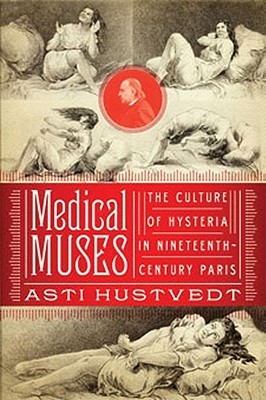
- We will send in 10–14 business days.
- Author: Asti Hustvedt
- Publisher: W. W. Norton & Company
- Pages: 372
- ISBN-10: 0393025608
- ISBN-13: 9780393025606
- Format: 14.5 x 21.1 x 3.3 cm, kieti viršeliai
- Language: English
- SAVE -10% with code: EXTRA
Reviews
Description
In the 1870s, three women--Blanch, Augustine, and Genevieve--found themselves in the hysteria ward of the Salpetriere Hospital in Paris under the direction of the prominent neurologist Jean-Martin Charcot. Their illness came to define the era, and in turn they became medical celebrities: every week, eager crowds arrived at the hospital to observe their symptoms; they were photographed, sculpted, painted, and transformed into characters in novels. The remarkable story of their lives as patients in the clinic is a strange amalgam of intimate details and public exposure, science and religion, medicine and the occult, hypnotism, love, and theater.
But who were Blanche, Augustine, and Genevieve? What role did they play in their own peculiar form of stardom? And what exactly were they suffering from? Hysteria--with its dramatic seizures, hallucinations, and reenactments of past traumas--may be an illness of the past, but the notions of femininity that lie behind it offer insights into disorders of the present.
EXTRA 10 % discount with code: EXTRA
The promotion ends in 23d.19:23:52
The discount code is valid when purchasing from 10 €. Discounts do not stack.
- Author: Asti Hustvedt
- Publisher: W. W. Norton & Company
- Pages: 372
- ISBN-10: 0393025608
- ISBN-13: 9780393025606
- Format: 14.5 x 21.1 x 3.3 cm, kieti viršeliai
- Language: English English
In the 1870s, three women--Blanch, Augustine, and Genevieve--found themselves in the hysteria ward of the Salpetriere Hospital in Paris under the direction of the prominent neurologist Jean-Martin Charcot. Their illness came to define the era, and in turn they became medical celebrities: every week, eager crowds arrived at the hospital to observe their symptoms; they were photographed, sculpted, painted, and transformed into characters in novels. The remarkable story of their lives as patients in the clinic is a strange amalgam of intimate details and public exposure, science and religion, medicine and the occult, hypnotism, love, and theater.
But who were Blanche, Augustine, and Genevieve? What role did they play in their own peculiar form of stardom? And what exactly were they suffering from? Hysteria--with its dramatic seizures, hallucinations, and reenactments of past traumas--may be an illness of the past, but the notions of femininity that lie behind it offer insights into disorders of the present.


Reviews